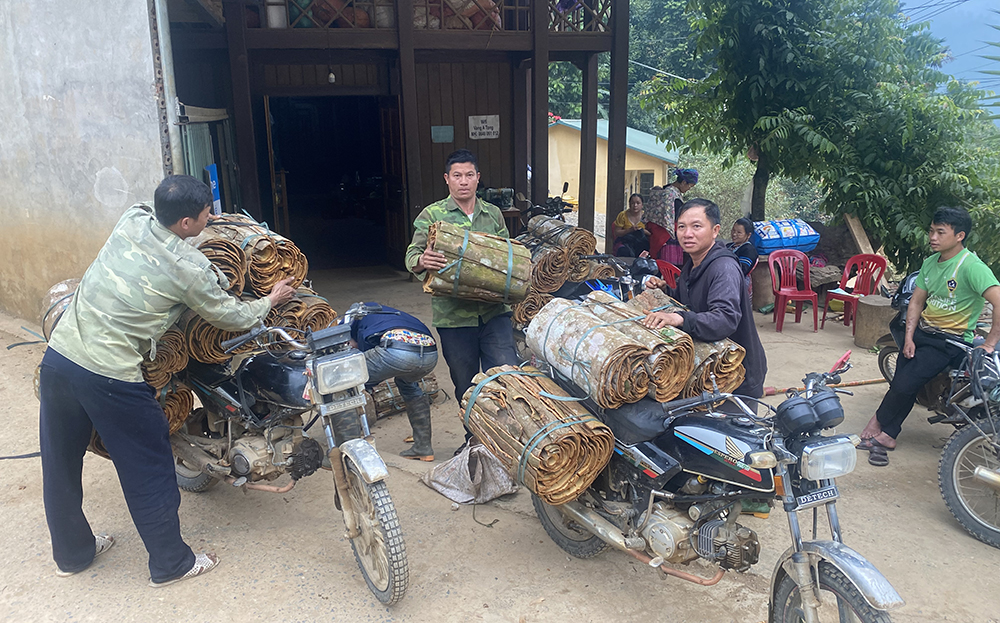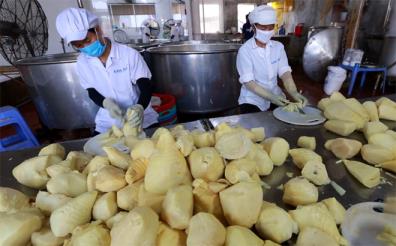Many years ago, the life of the Mong people was associated with the practice of nomadic farming and changing places of residence. To build a new life in a new land, they cut down trees and destroyed forests. Wood of big trees was used to build houses and make household items, while that of small ones was used as firewood. Vacant land was for farming, cultivation, and food production. Just like that, until the land was no longer fertile, they continued to look for a new land to live and repeat the cycle.
Therefore, with every step they took, a forest was cut down. But that's just the past!
Now, after many years of dissemination and encouragement, the Mong people have changed their awareness and given up their nomadic life to settle down stably in hamlets. They have also not charged forest resources for immediate economic benefits; and both developed agroforestry and intensive afforestation, and received contracts to protect natural forests and protective forests. As a result, their lives have changed a lot.
Khe Ken is one of the six villages in Cat Thinh commune of Van Chan district whose entire population belongs to the Mong ethnic group. For many years, the local community has trusted and followed the Party's leadership, eliminated many bad customs, built a new life and developed the economy. Mountains and forests are still a fertile source of life for them, but are exploited in a different way.
Hang Giang Sinh in Khe Ken village is a pioneer in the movement to develop forestry in a sustainable way. In the past, like many Mong households, Sinh also only knew how to make a living from forests by picking bamboo shoots, dong (Phrynium placentarium) leaves, and Thysanolaena latifolia.
Unwilling to accept an unstable life, Sinh thought of a way to get rid of poverty from forests. He converted the corn fields to grow bamboo shoots, Bodhi and cinnamon. With every bit of perseverance and diligence from picking up seeds, learning how to nurse them, to planting, and weeding, he now has six hectares of forest.
The entire village has now developed over 100 hectares of cinnamon and Bodhi, 30 hectares of bamboo shoots, helping reduce the number of poor households to 27, equivalent to 32% in 2023.
The good news is that economic models like Sinh's are increasingly popular among the Mong community in Yen Bai province. Afforestation not only helps reduce poverty but also helps many local residents get rich. Numerous Mong households have an income of several hundreds of million of dong per year, can buy cars, and build houses worth billion of dong.
Members of the patrol and forest protection team in Khao Mang commune, Mu Cang Chai district, are regularly on duty at the guard camp at the gateway to the forest.
From planting, caring for and protecting forests, and preserving the nature, many villages have also built unique tourism products that not only attracted a large number of tourists, but also created brands for the province, thus generating more income for local people.
They have also signed contracts to protect forests, with hundreds of forest management and protection groups and teams established. With the Mong people accounting for over 90% of its population, Mu Cang Chai mountainous district currently has 108 such groups. In 2023, 97.4% of local households have signed a commitment to protect forests and prevent forest fires. As a result, its forest coverage rate reached 67.35%.
With locals’ efforts, the forests are growing greener every day as a way for the Mong people to repay the forest and make up for past mistakes. Their efforts and contributions to protecting and regenerating forests are a great motivation for Yen Bai to continue to stabilise the forest coverage rate at 63% in 2023 and strive to increase the figure to 63.5-65% in the 2022 - 2025 period.
Hoai Anh









